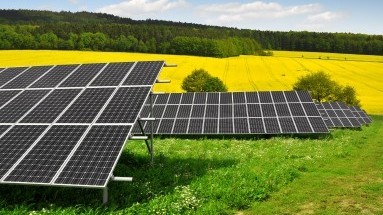Power generation cost in the Philippines is double compared to its neighbouring countries, Solar Philippines CEO claims.

Solar Philippines may have engaged in international opportunities for solar development but will be more focused on expanding the solar sector of its home country—the most “fundamentally attractive” for the solar market in Southeast Asia, Solar Philippines CEO Leandro Leviste asserted.
This is because the country’s power generation costs are even double compared to other countries, Leviste said at the Asian Power Summit.
“It really behooves us to focus on saturating our home grid with solar energy and just branching out to other markets, once the power prices in the Philippines have been saturated with an influx of solar,” he added.
In the pipeline
Just in March, Solar Philippines, through its joint venture with Medco Energi, entered a 20-year power purchase agreement with Indonesia’s state utility PLN for a 50-megawatt solar project.
The company has a 400-megawatt (MW) capacity operating or under construction. By the end of next year, Solar Philippines is planning to add 1 gigawatt (GW) to its capacity, around half of the expected 2GW additional solar for the whole market. The Philippines has over 1,000MW of solar capacity.
Last December, Solar Philippines subsidiary, Solar Philippines Nueva Ecija Corporation, was listed at the Philippine Stock Exchange. The subsidiary, which has several Department of Energy (DOE) solar energy contracts, offtake agreements with local utilities, and joint venture agreements with other power companies, is planning to develop 10GW of solar projects which can start construction in the next few years.
“This is a model of being a project developer that partners with other IPPs [independent power producers], because we won't be able to achieve these capacity targets by ourselves. We will not be able to persuade the industry, if, as a company, we're trying to do it all by ourselves,” Leviste said.
“It's important to think that the mainstream power providers are convinced of solar themself, and hopefully this way, the whole Philippine power industry will support an accelerated renewable energy transition for this 10-gigawatt target that we've laid out,” he added.
This will also contribute to the Philippine DOE target of having 35% of the country’s energy mix as renewables by 2030, 20GW of which will be solar.
For Leviste, the government has already plenty of policies that will support the development of solar in the country to reach its 2030 target. One of which includes DOE-led auctions for solar development.
“It's really the private sector that is lagging in terms of implementing the sufficient supply to meet the demand that has been set by these policies,” he said.
Storage
Leviste said that in the last two to three years, costs have become competitive in both the peaking capacity requirements in the country and with storage for some of the evening requirements.
Demand is expected to rise but the supply will be constrained because of the scarcity of land, especially in the Greater Manila Area where much of the demand comes from, he said.
“That's what our company is focused on solving, not only developing projects for our own use but also to help the existing power companies of the Philippines more easily get into solar by rolling out projects in partnership with them. And hopefully, that way, the Philippines can become a forerunner for large-scale solar with storage at the gigawatt-scale in Southeast Asia,” he added.
Leviste also said that the Philippines has potential for large-scale battery deployment, as some other power companies in the country are implementing the largest capacity of battery storage for ancillary service requirements in the grid, citing conglomerate San Miguel Corporation’s 1000MW battery storage project.
Same as how the country is often the “early adopter” of new technologies, such as for solar and battery for ancillary, it will also be ”an early adopter for batteries for energy shifting,” the CEO said.
“When we talk about these gigawatts of solar, that's not going to be solar on a standalone basis, it's going to be solar that will need to have batteries so that the grid will be able to absorb this large capacity,” he added.
For the part of Solar Philippines, Leviste said that it would just be importing batteries wherever it costs the least instead of manufacturing its own as the company already has a lot of projects ongoing.
